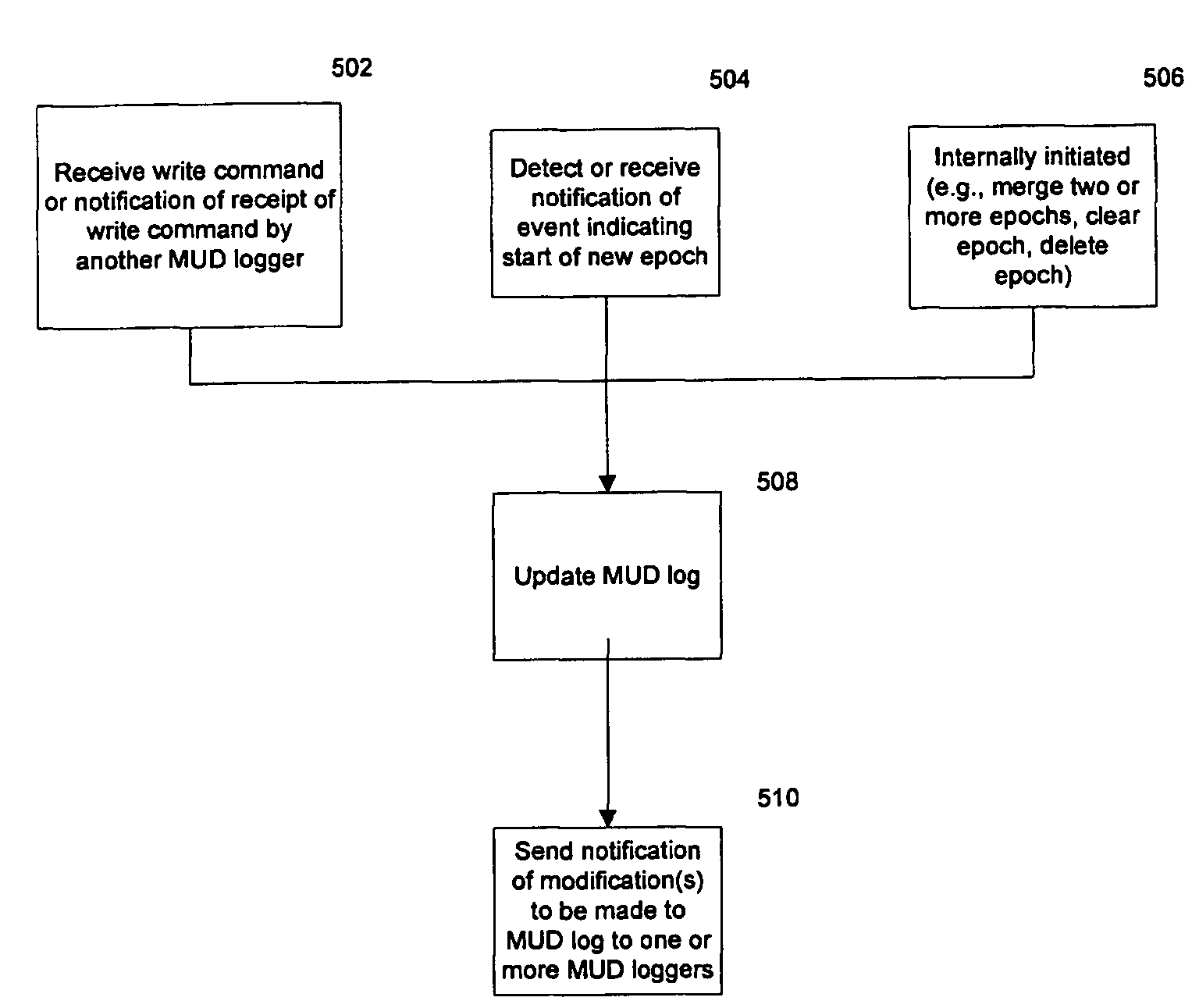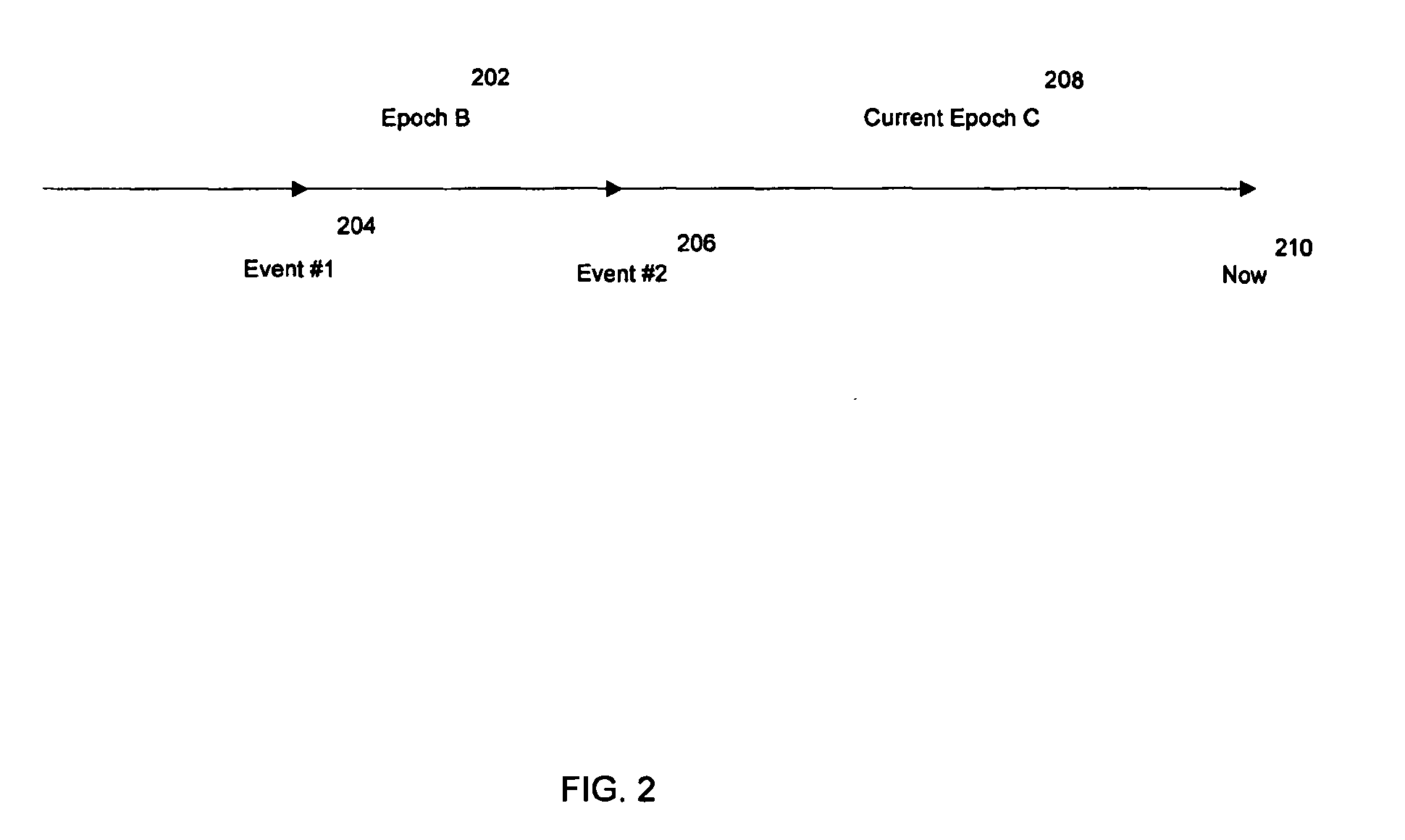Epoch-based MUD logging
a technology of mud logging and epoch, applied in the field of network technology, can solve the problems of limited flexibility, data storage needs, and inability to increase the capacity of storage devices as fast, and achieve the effect of efficient updating
- Summary
- Abstract
- Description
- Claims
- Application Information
AI Technical Summary
Benefits of technology
Problems solved by technology
Method used
Image
Examples
Embodiment Construction
[0037]In the following description, numerous specific details are set forth in order to provide a thorough understanding of the present invention. It will be obvious, however, to one skilled in the art, that the present invention may be practiced without some or all of these specific details. In other instances, well known process steps have not been described in detail in order not to unnecessarily obscure the present invention.
[0038]The disclosed embodiments support MUD logging in a system implementing virtualization. More particularly, the embodiments described herein may be implemented in a system implementing network-based virtualization. In a system implementing network-based virtualization, virtualization may be implemented across multiple ports and / or network devices such as switches or routers that are in the path between hosts and storage devices. As a result, write commands addressed to a volume may be intercepted by different network devices (e.g., switches, routers, etc...
PUM
 Login to View More
Login to View More Abstract
Description
Claims
Application Information
 Login to View More
Login to View More - R&D
- Intellectual Property
- Life Sciences
- Materials
- Tech Scout
- Unparalleled Data Quality
- Higher Quality Content
- 60% Fewer Hallucinations
Browse by: Latest US Patents, China's latest patents, Technical Efficacy Thesaurus, Application Domain, Technology Topic, Popular Technical Reports.
© 2025 PatSnap. All rights reserved.Legal|Privacy policy|Modern Slavery Act Transparency Statement|Sitemap|About US| Contact US: help@patsnap.com



